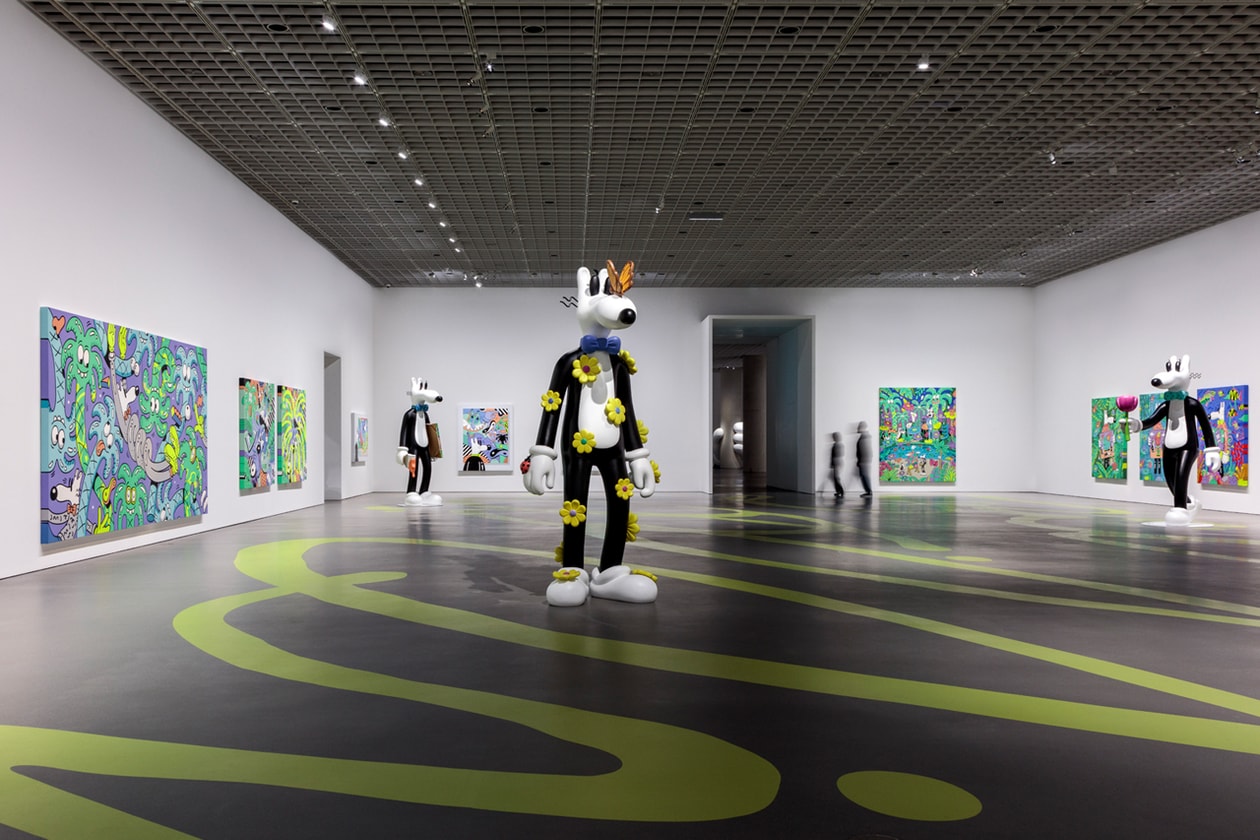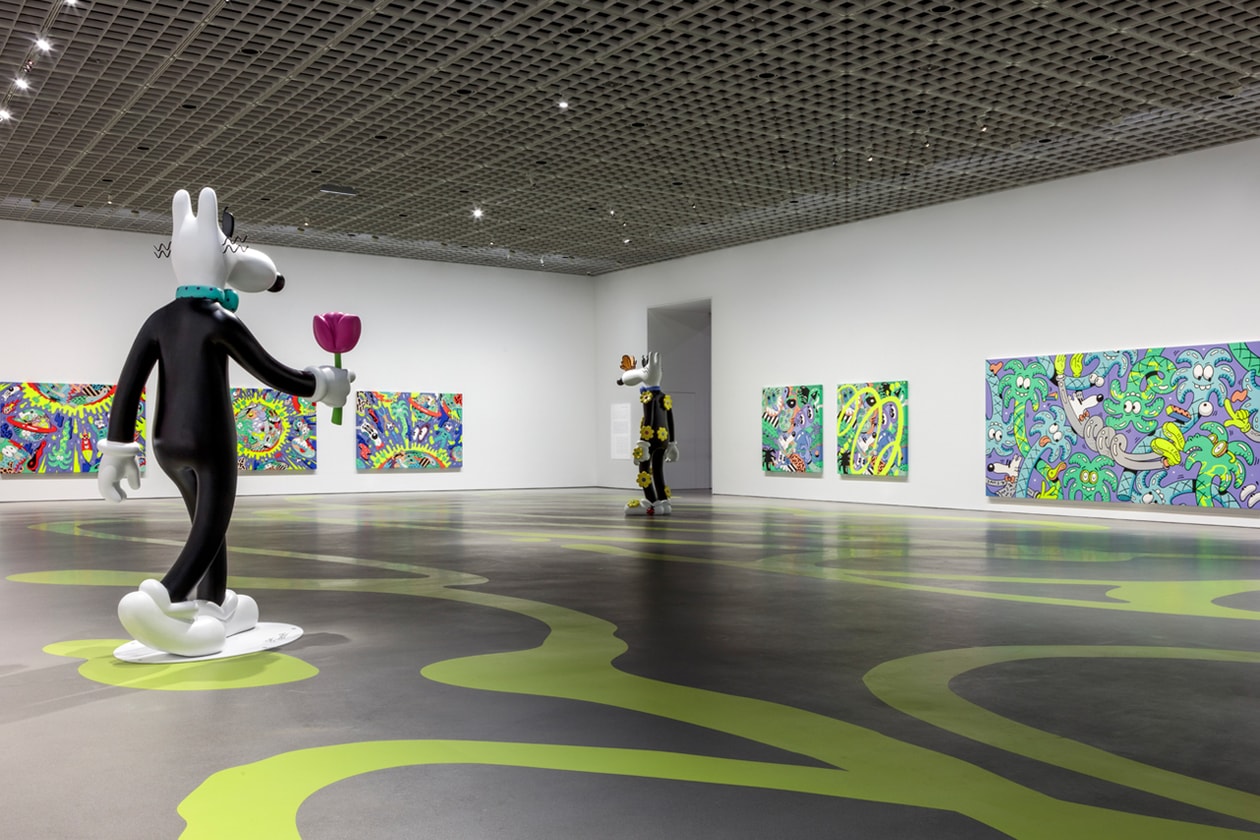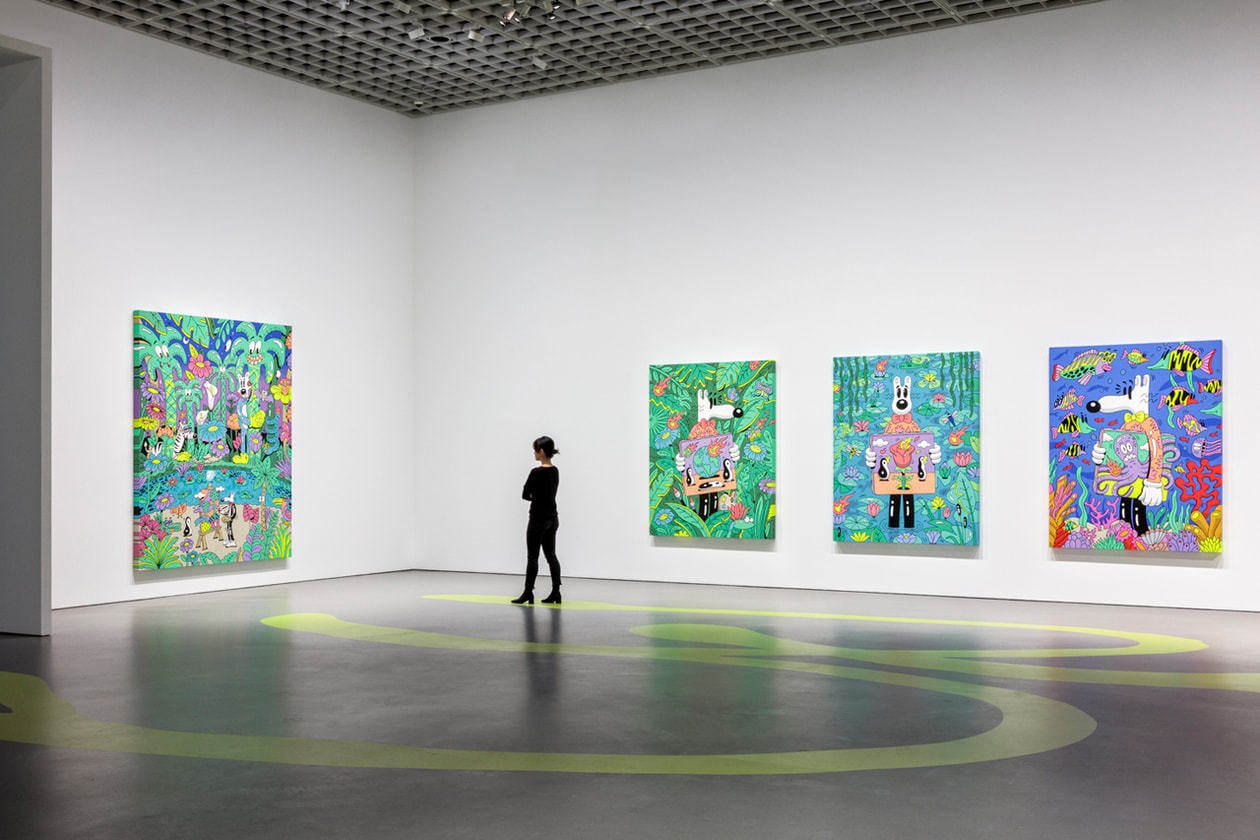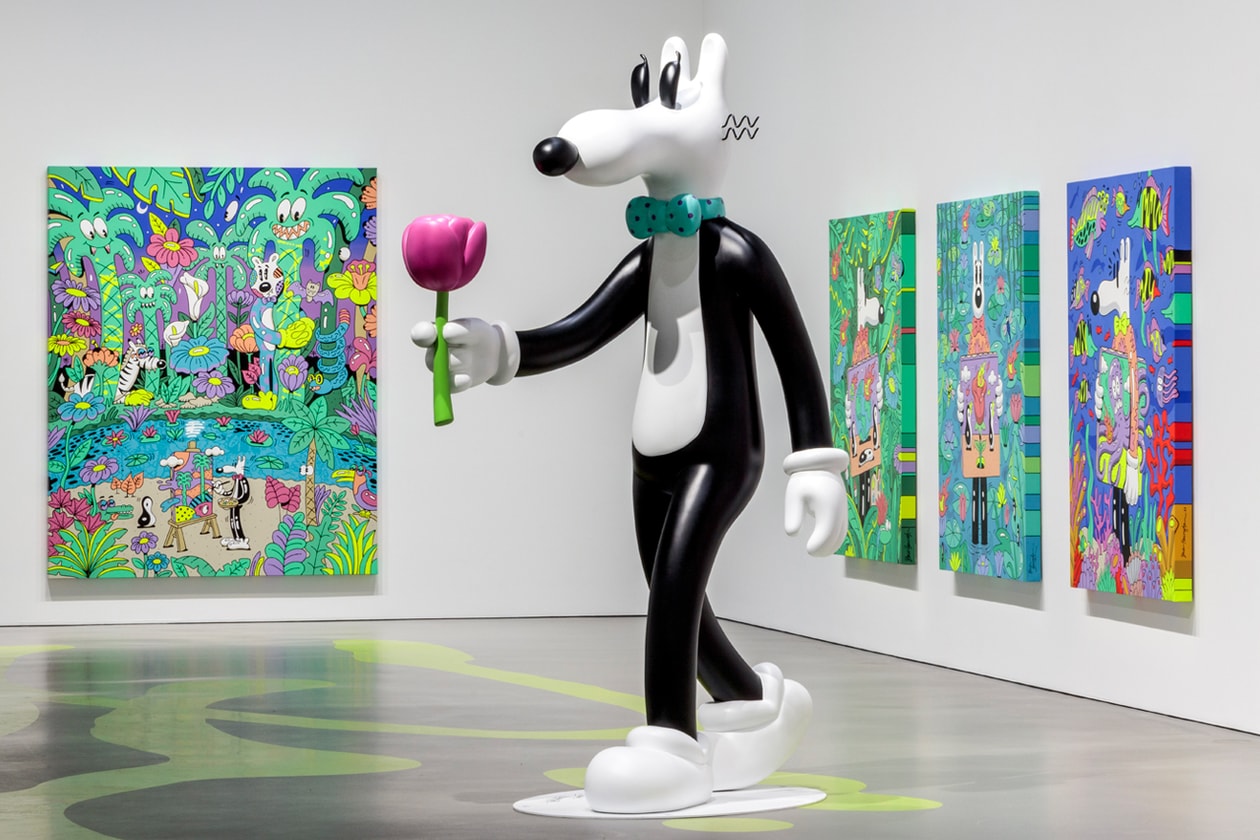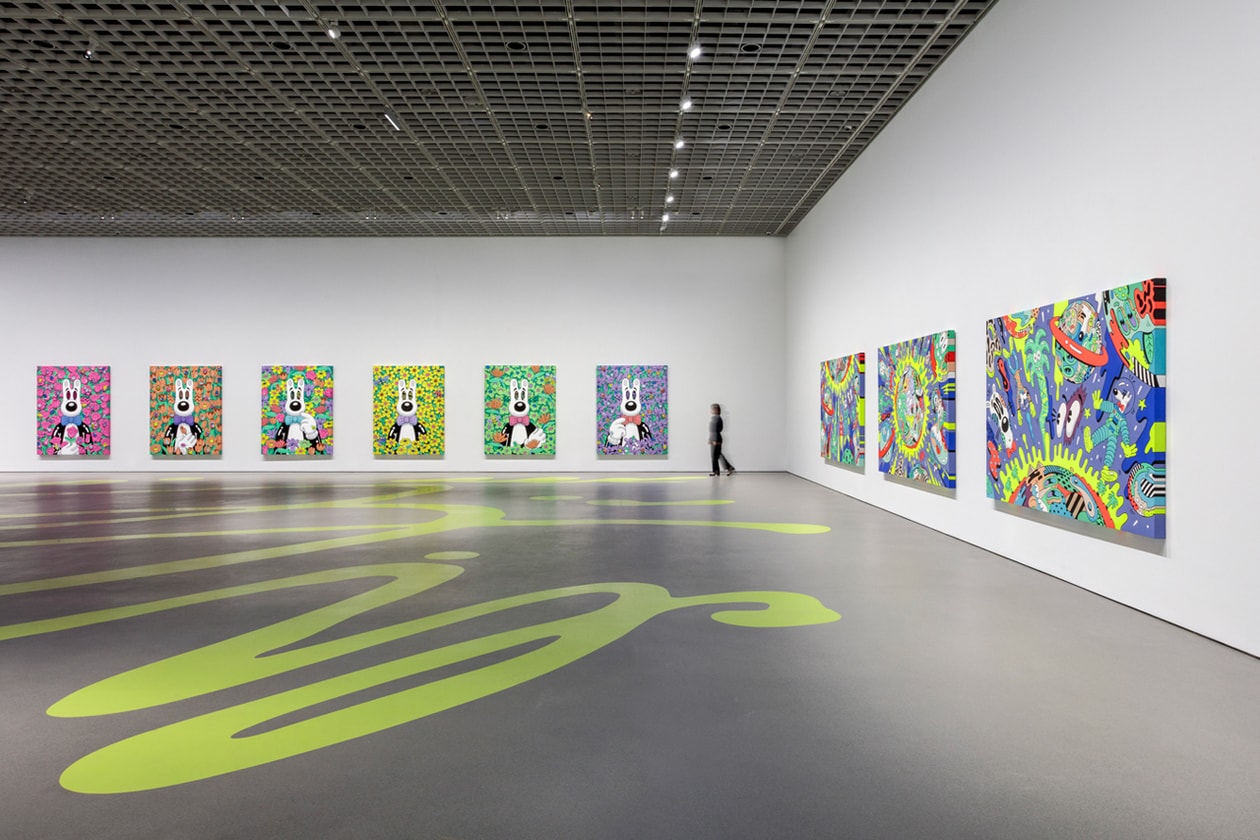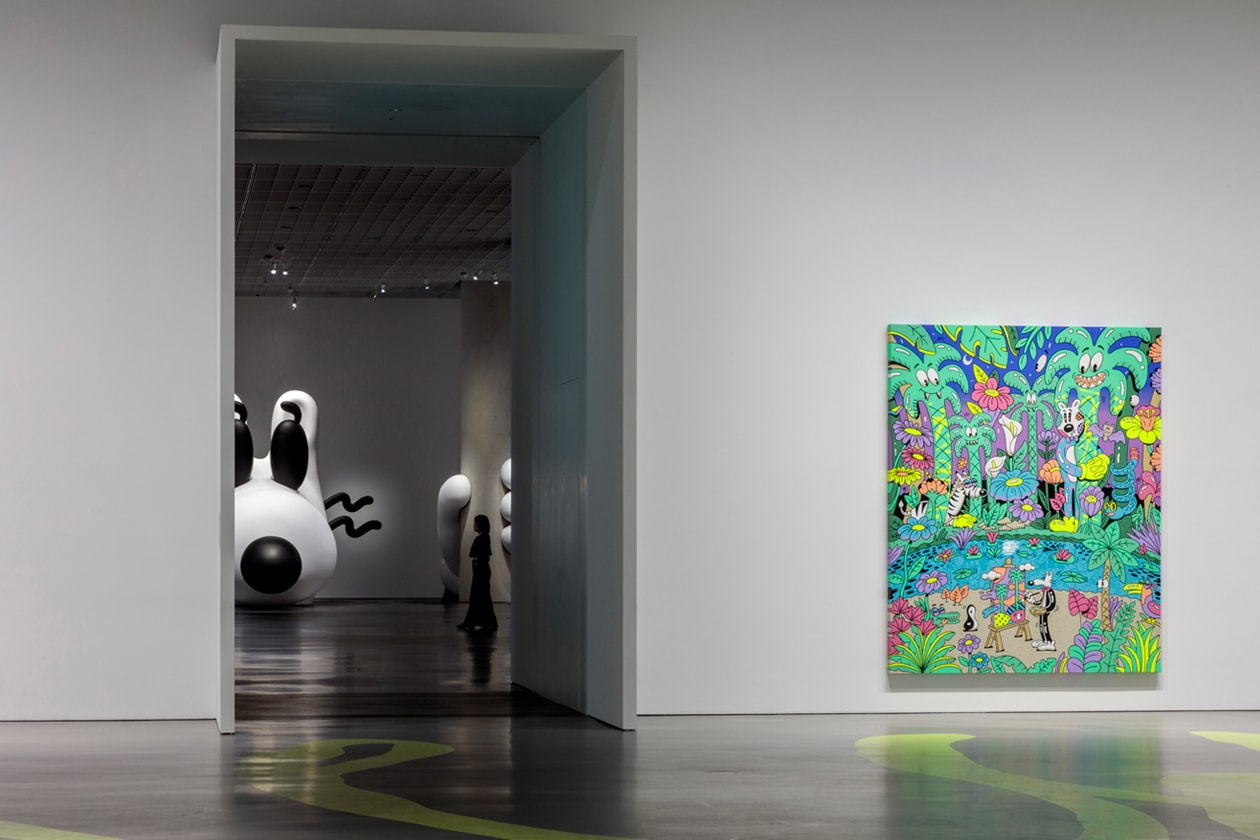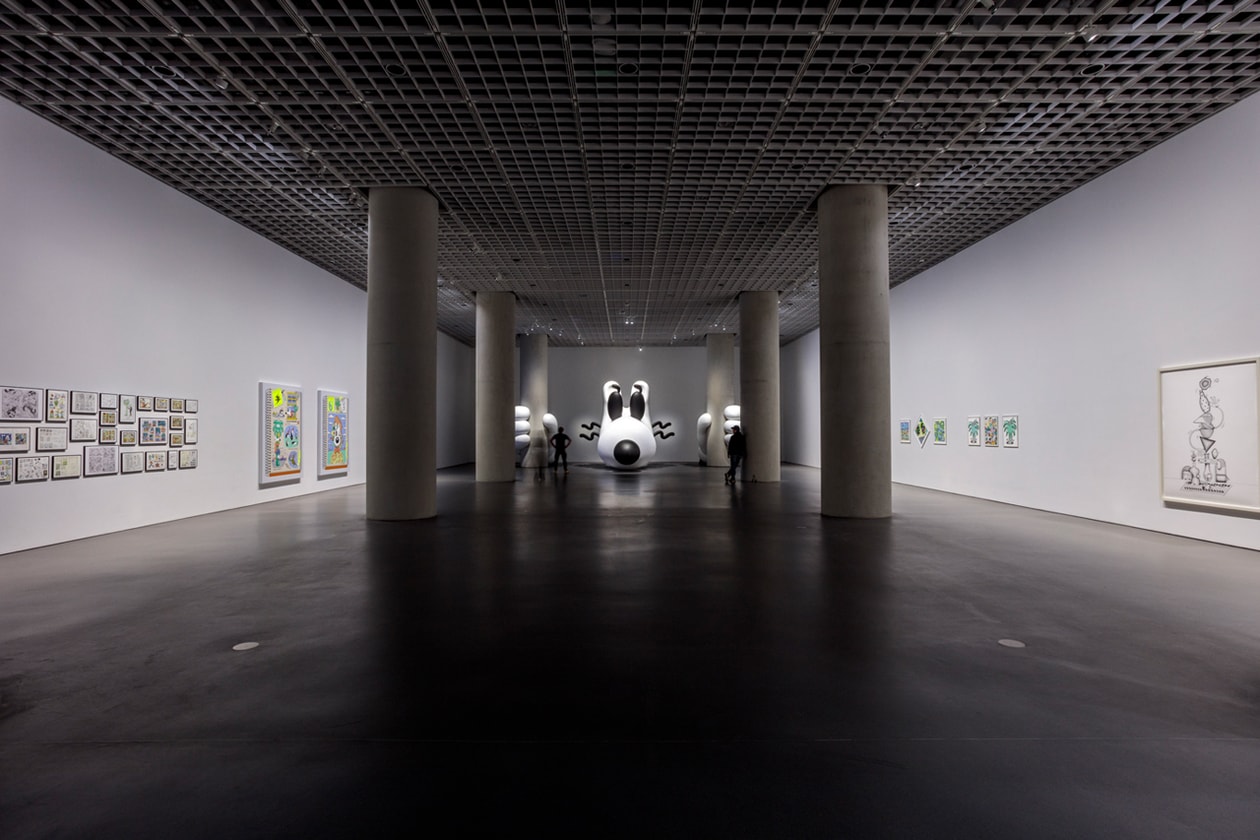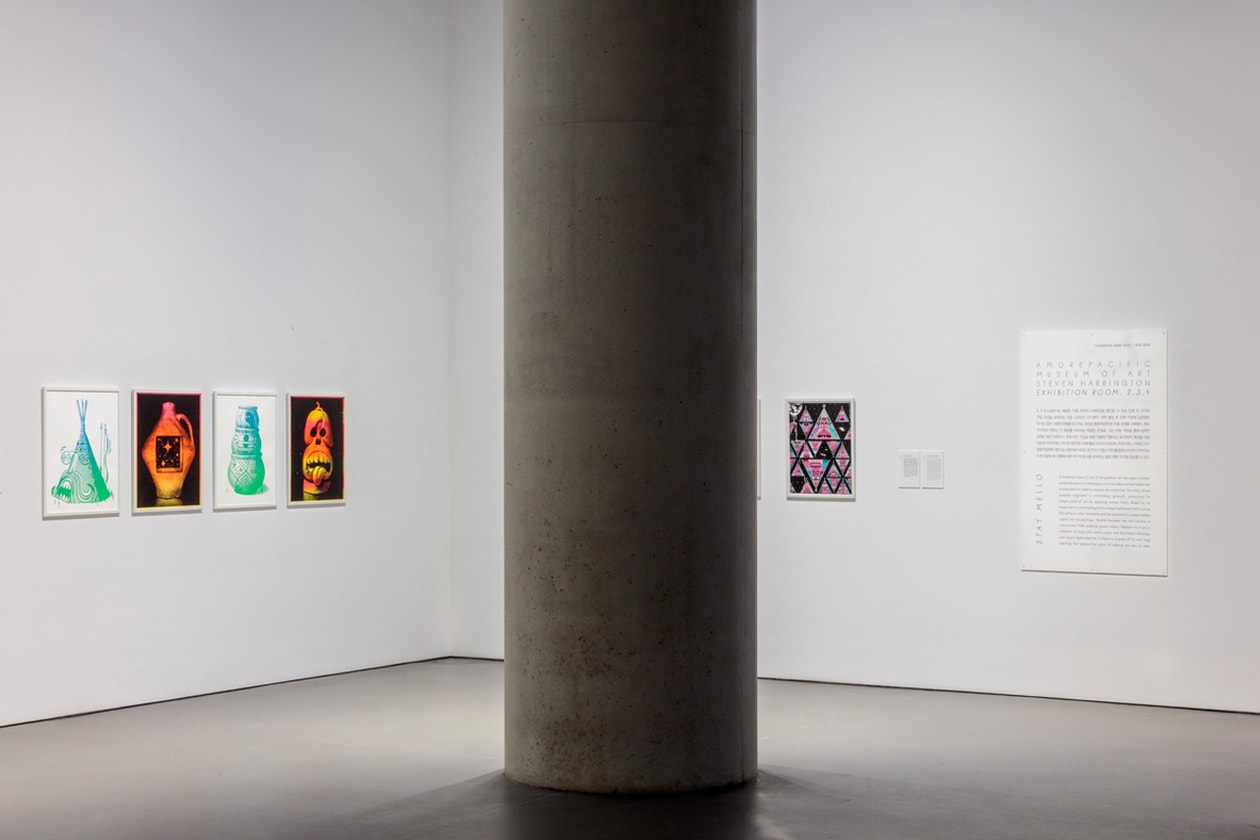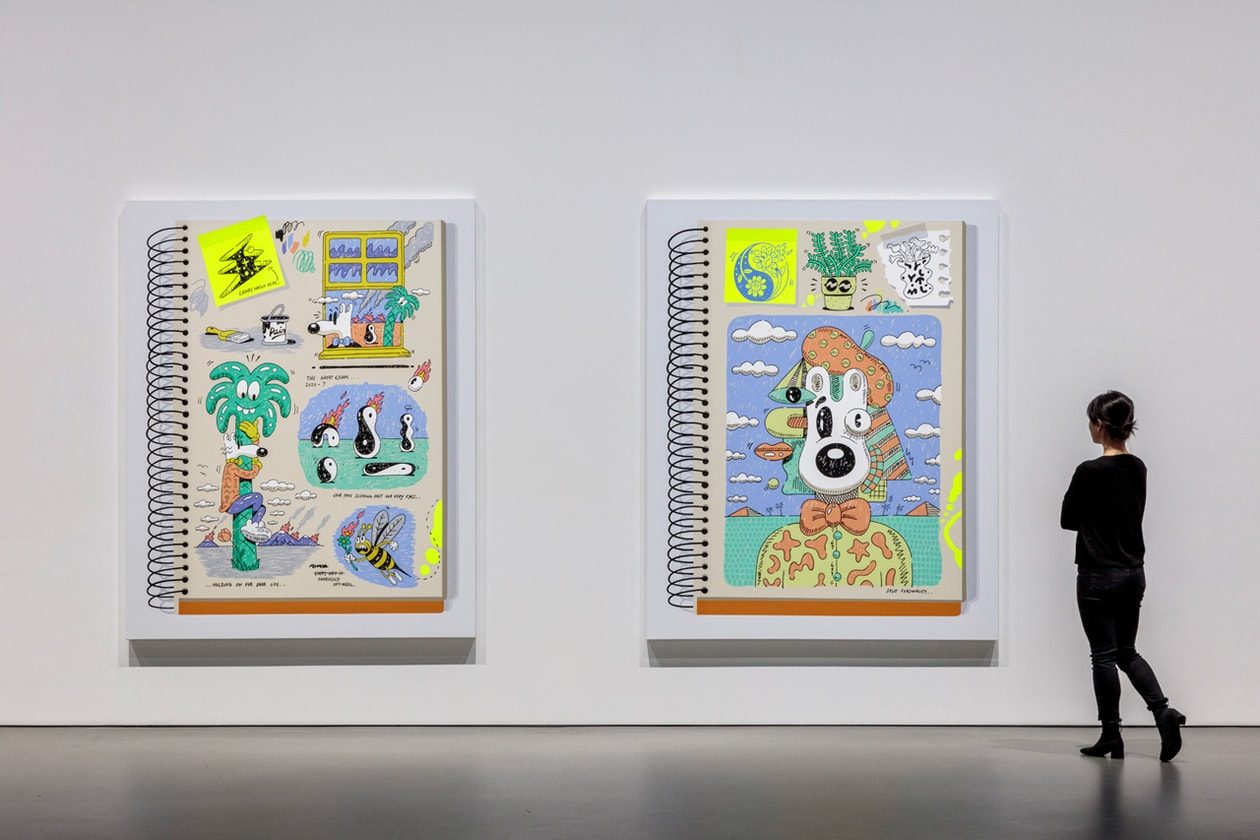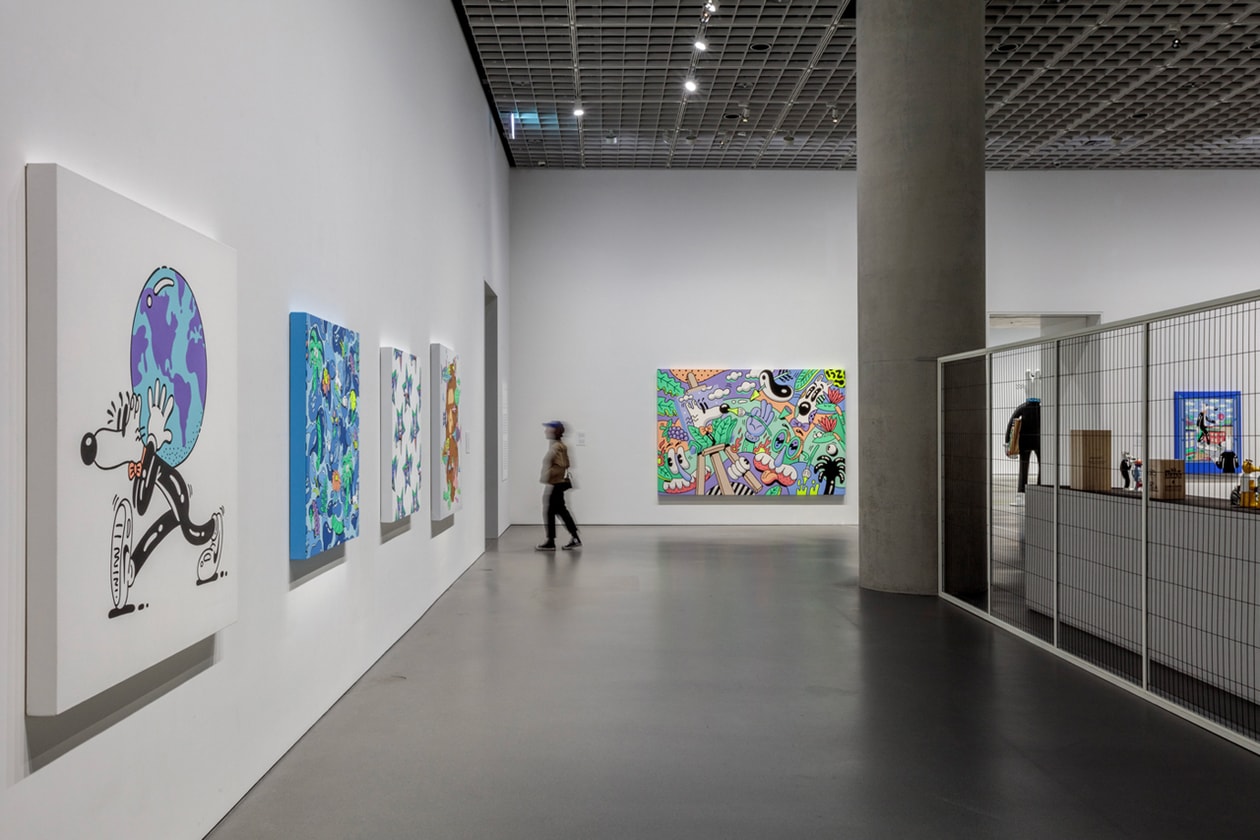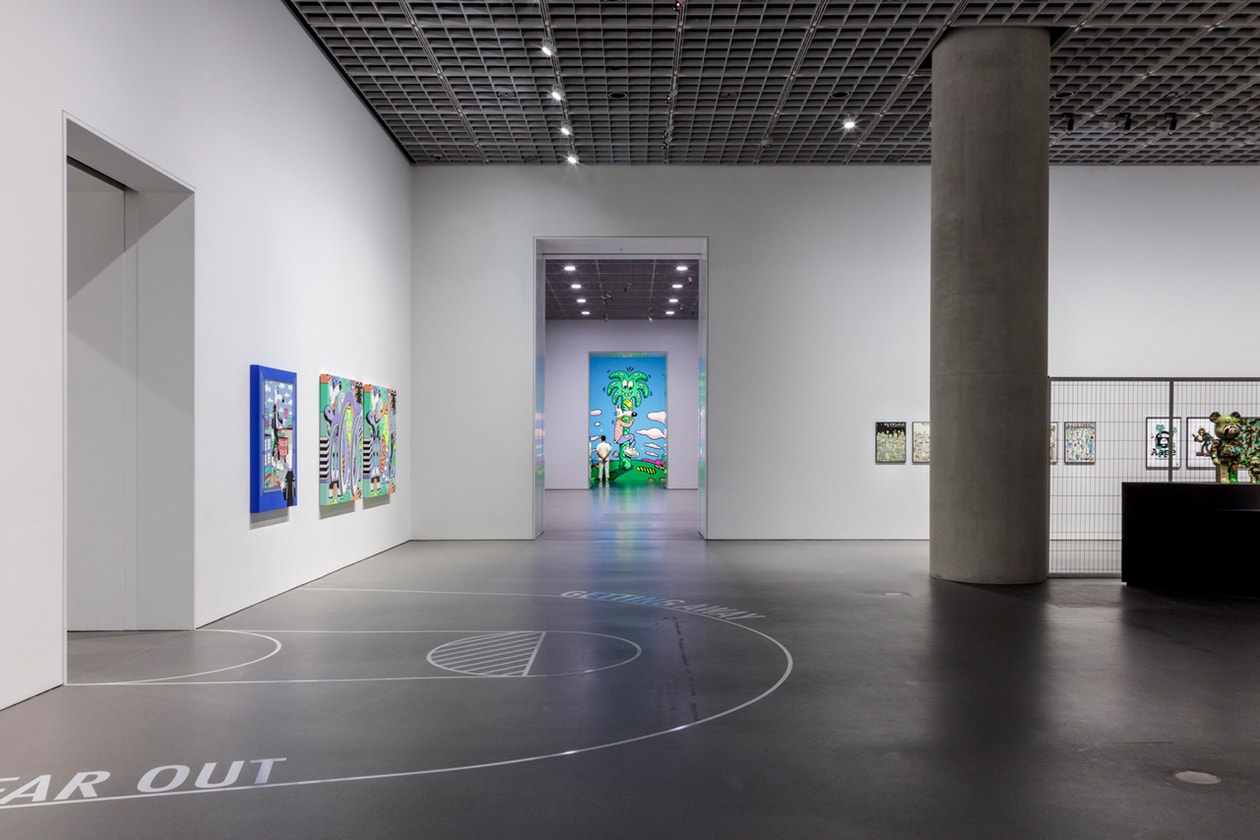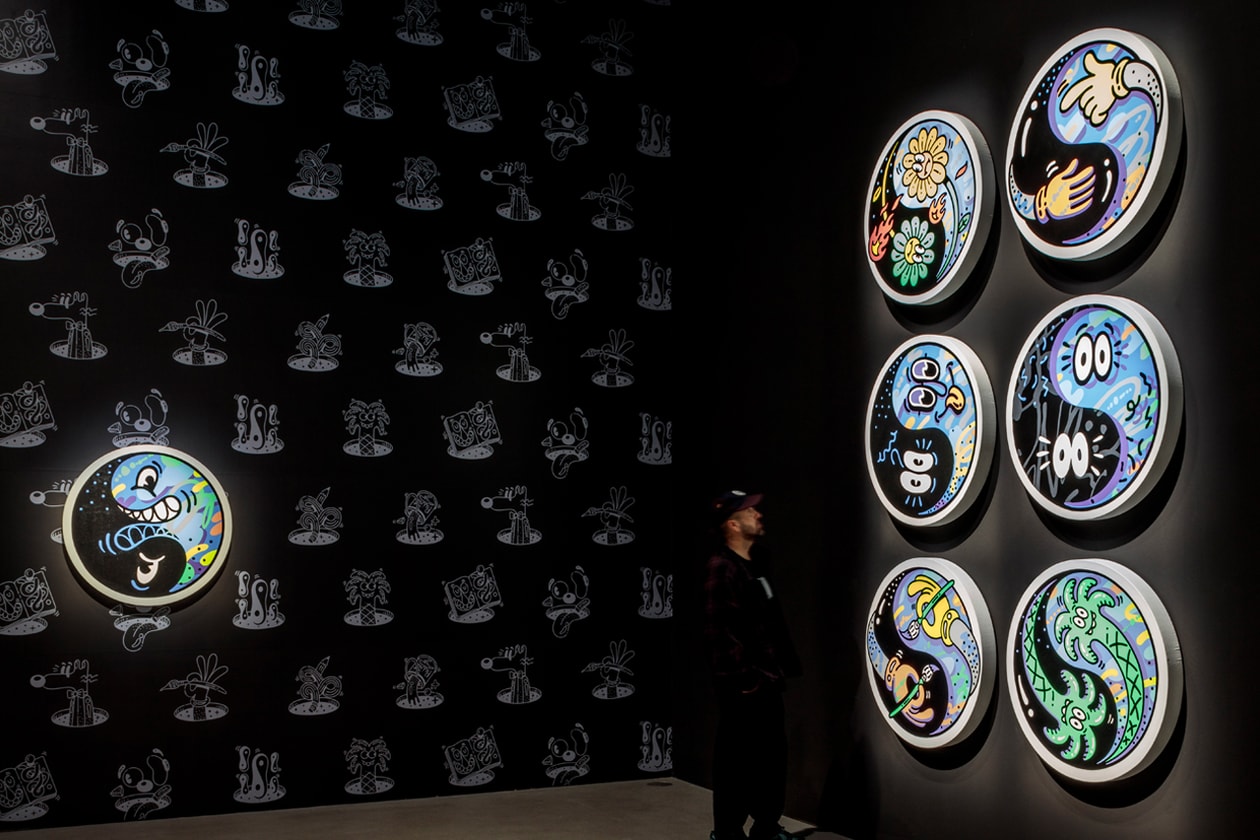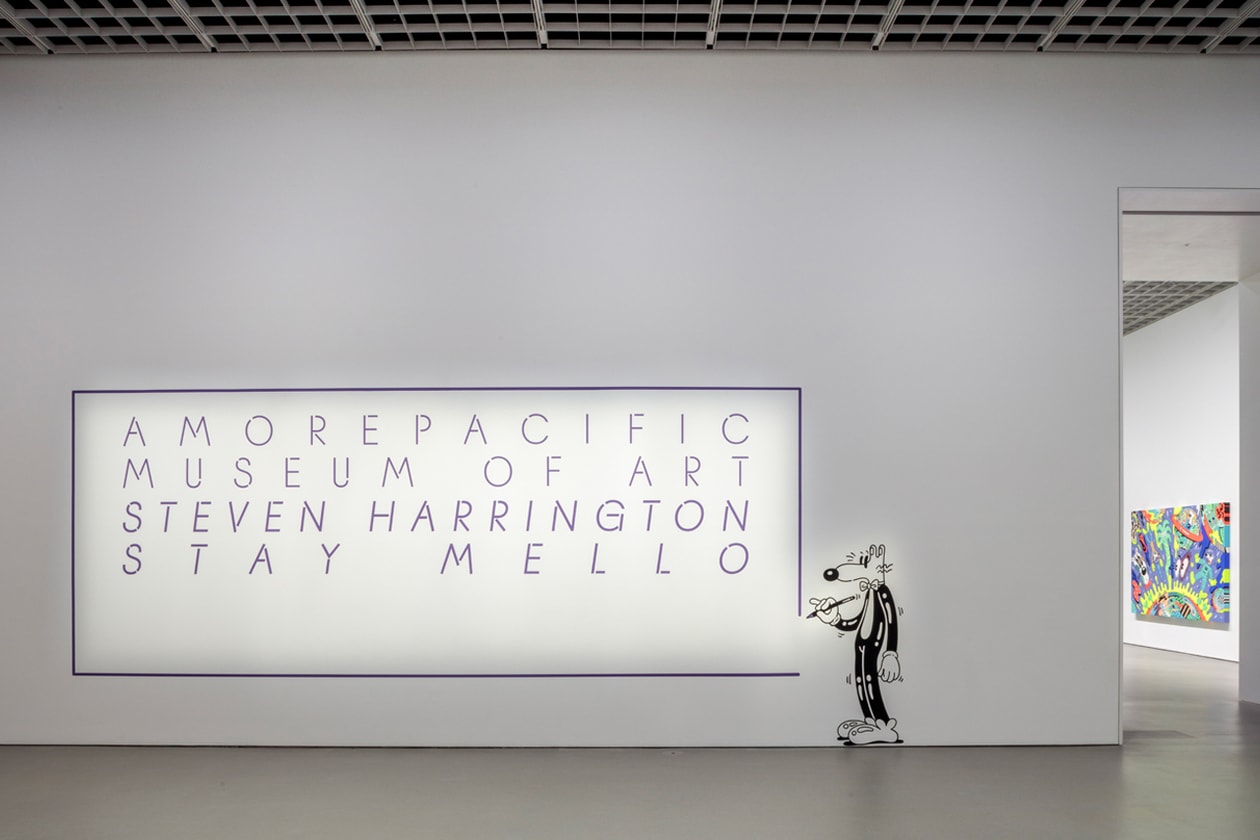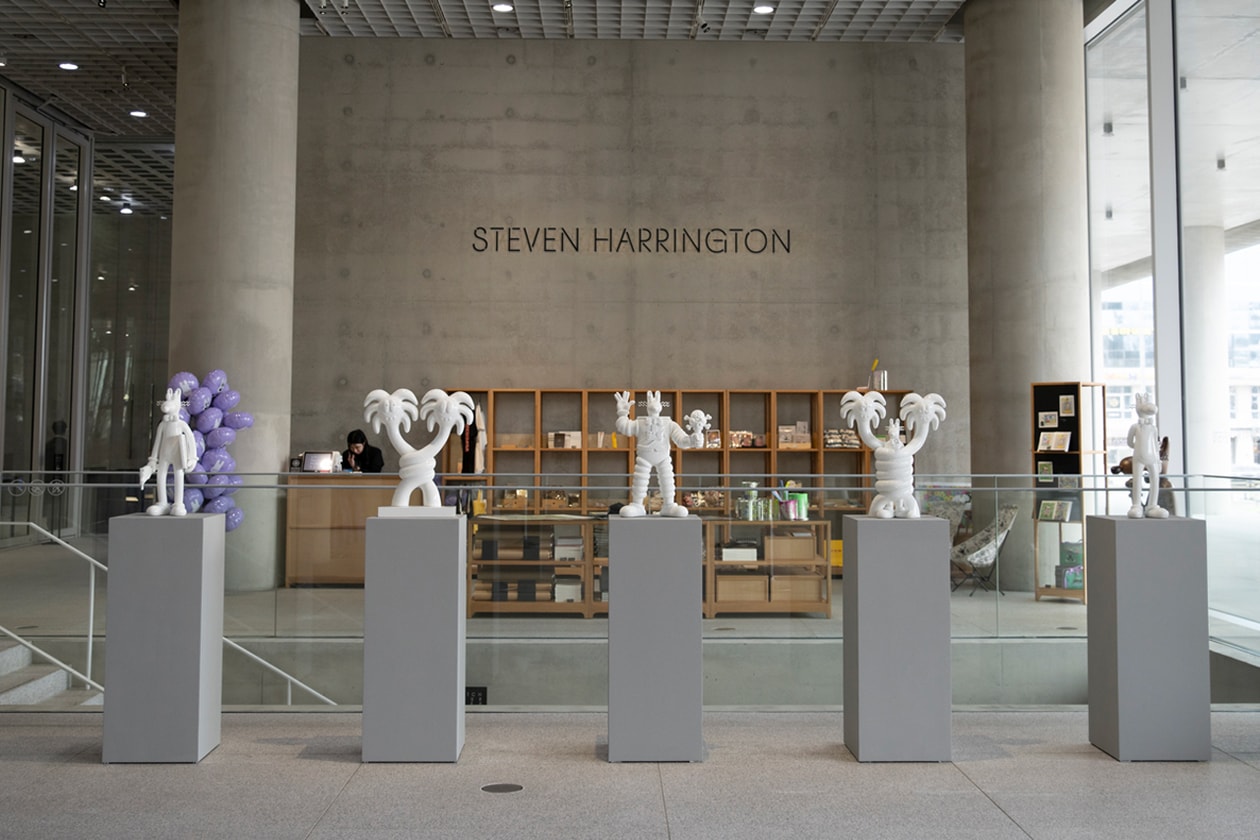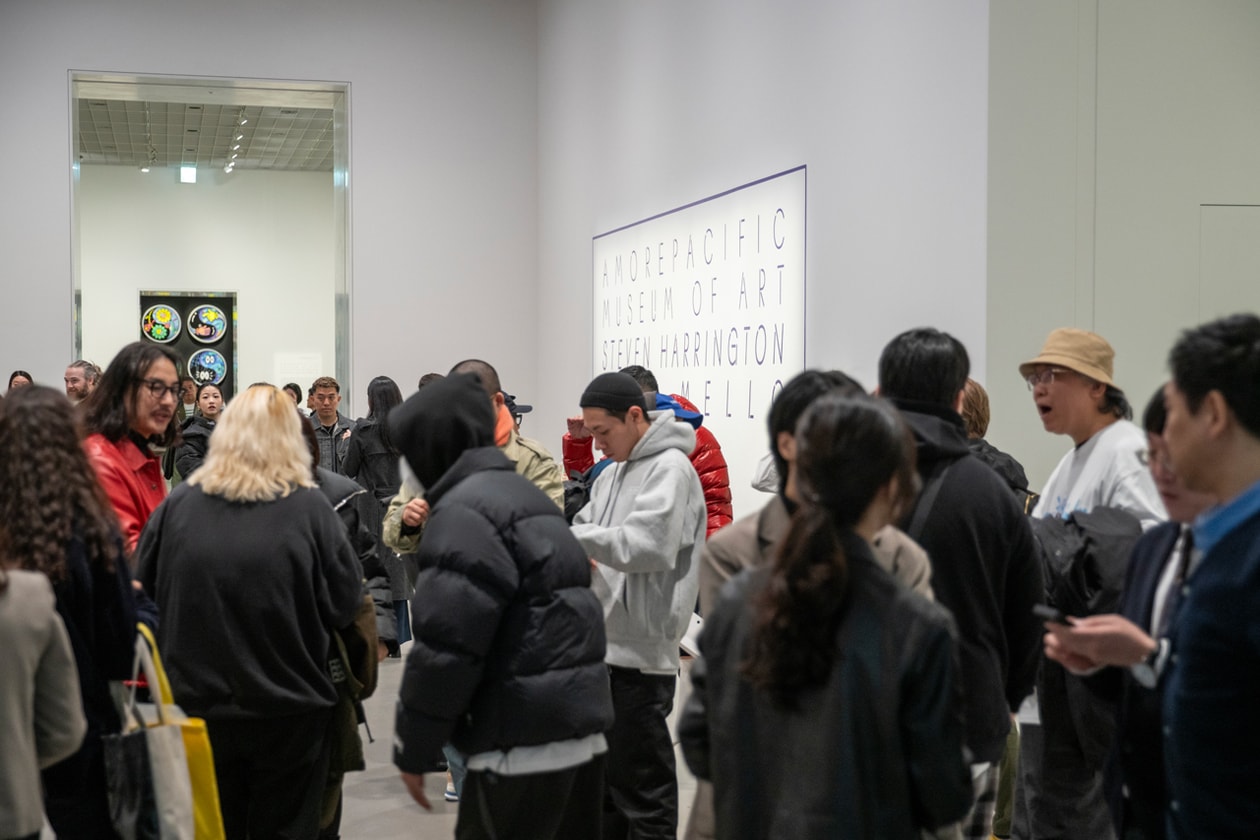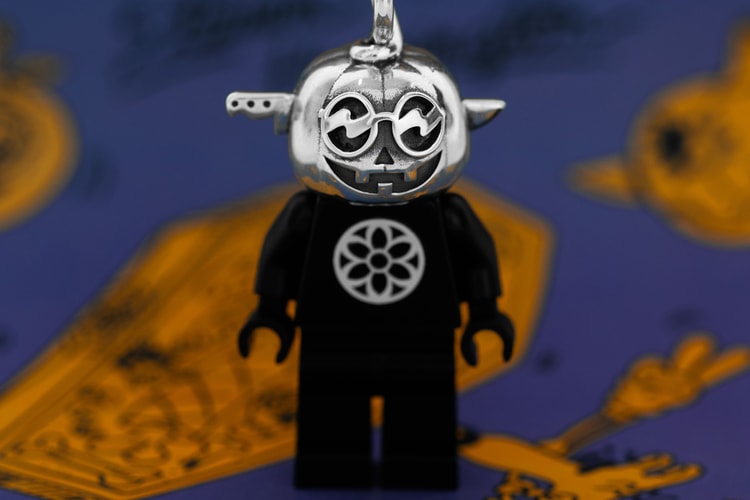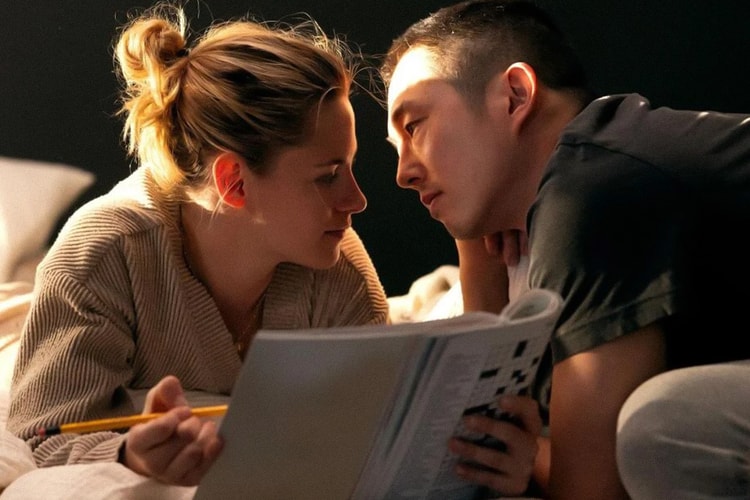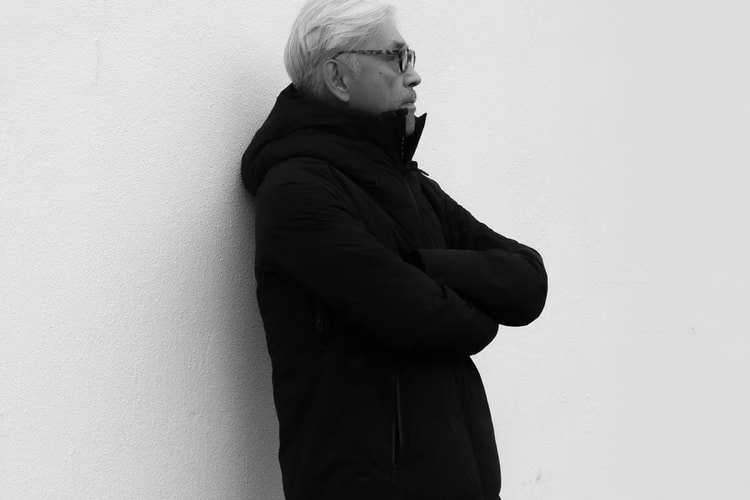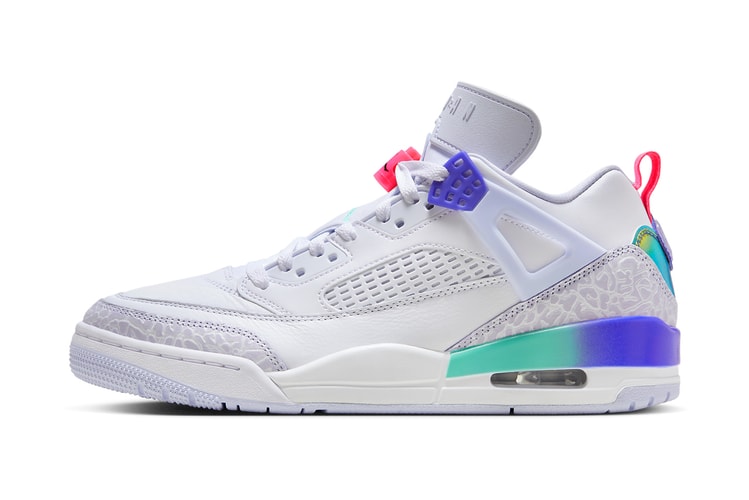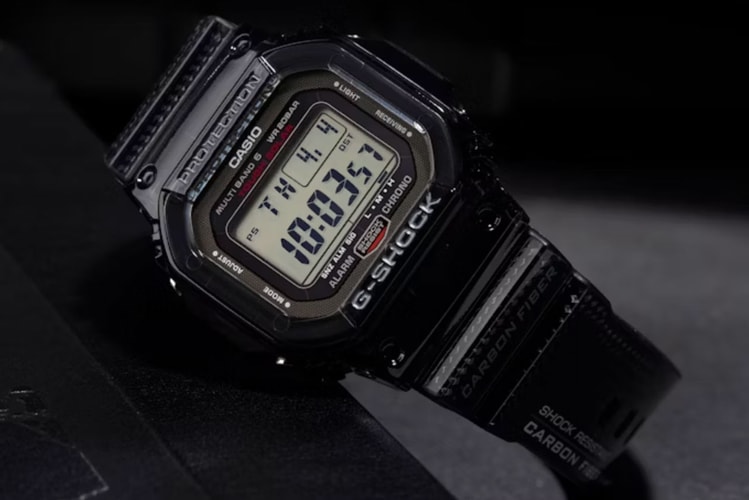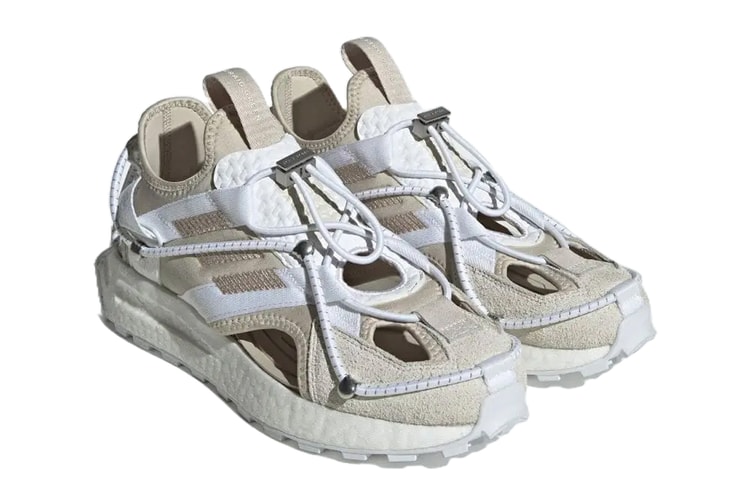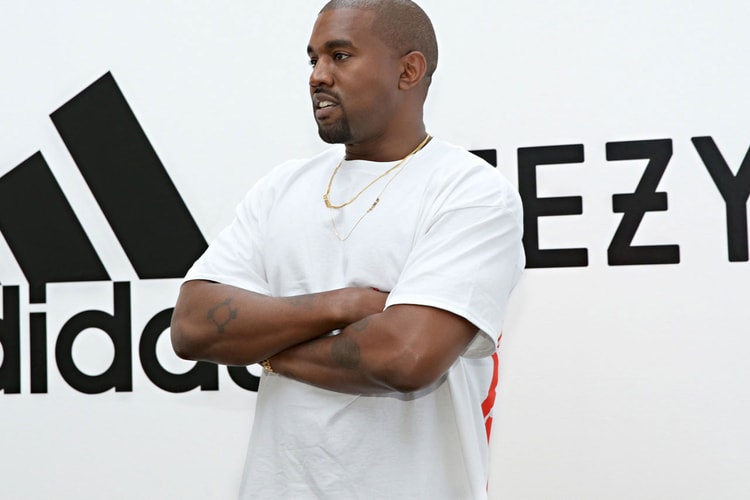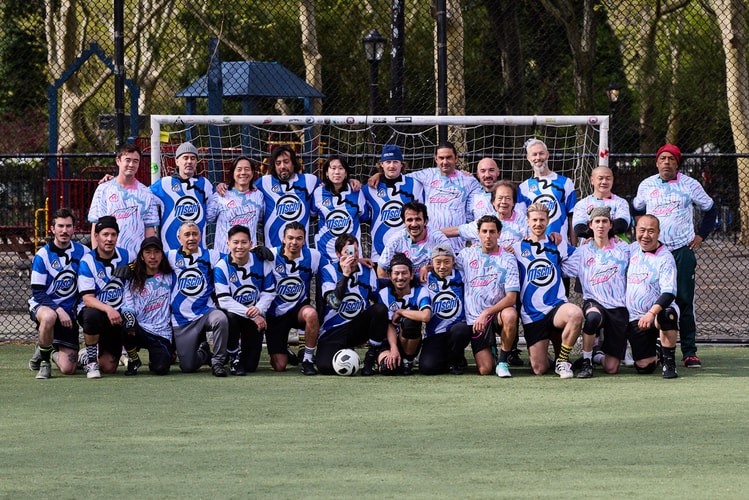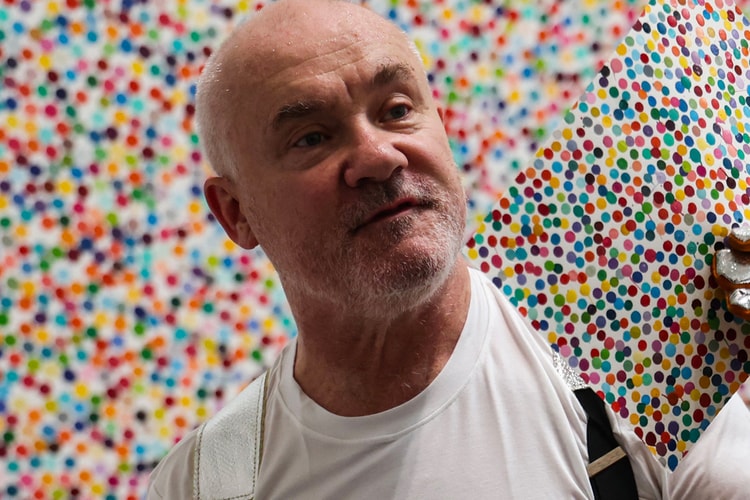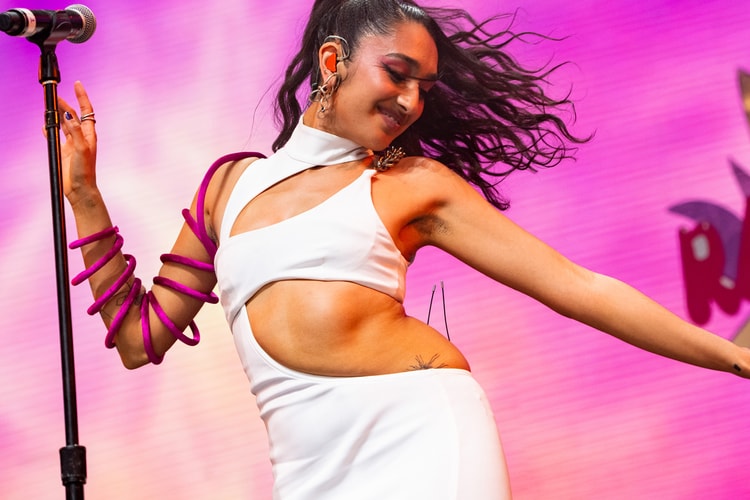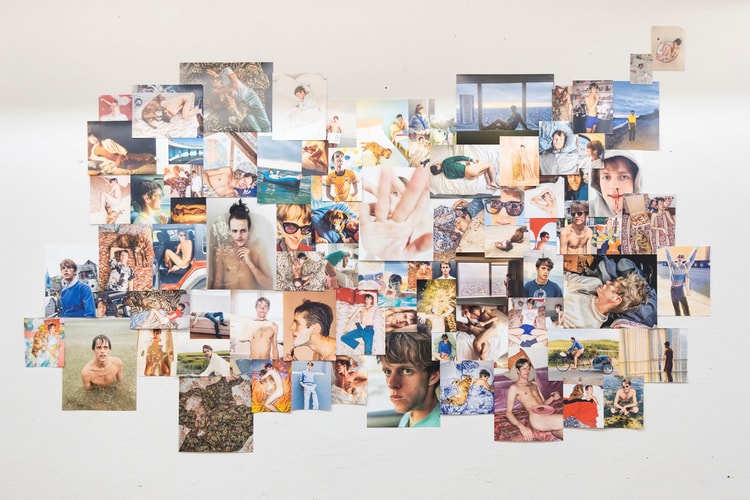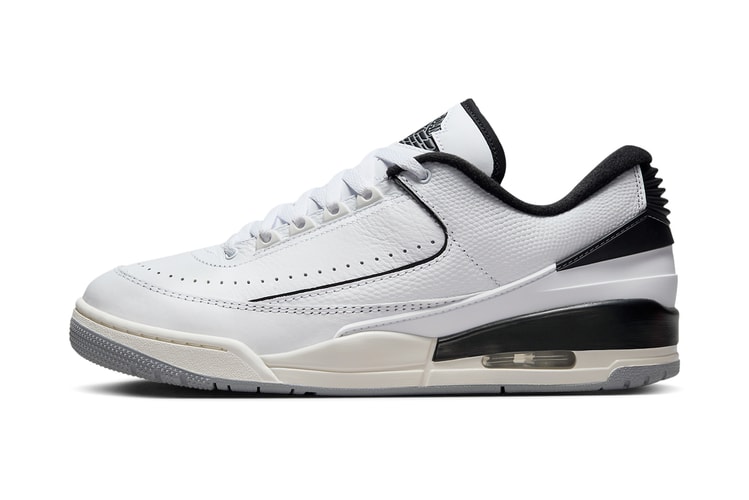Steven Harrington Wants You to Stop and Smell the Flowers
Hypeart caught up with the LA-based artist to discuss his first museum solo exhibition at Seoul’s APMA.
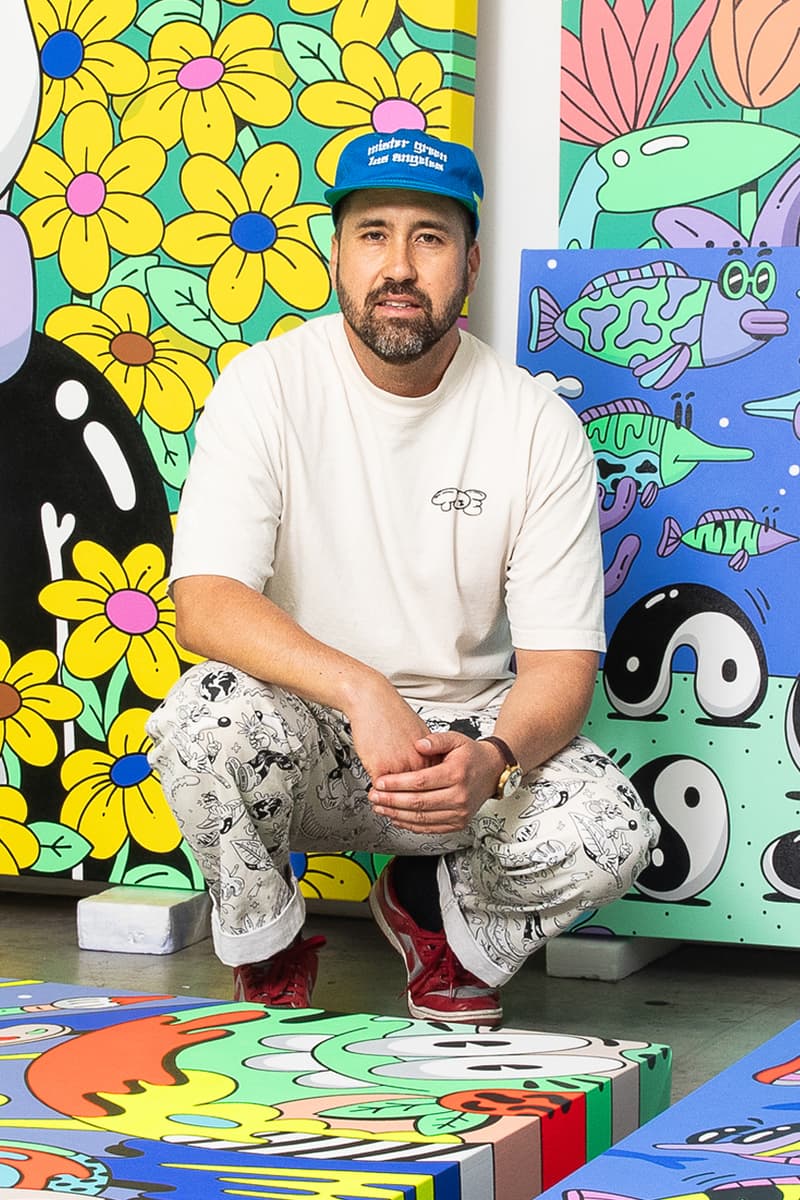
Steven Harrington Wants You to Stop and Smell the Flowers
Hypeart caught up with the LA-based artist to discuss his first museum solo exhibition at Seoul’s APMA.
Steven Harrington is a man of many hats. Most know him as the pop psychedelic artist who balances quirky and sometimes chaotic compositions with the charm of smiling palm trees and yin yang symbols. Others know him through his massive sculptures, such as the rooftop park he once designed in Changsha, China or his rolodex of collaborations spanning BE@RBRICK, Moncler and UNIQLO to Nike, the former Colette store in Paris and Case Studyo.
There is a carefree attitude that is echoed throughout his life, in-and-out of the studio, such as his love for Halloween — not necessarily the holiday itself, but the vibe and month leading up to the big day, along with the periodic DJ mixes he curates that span backpack rap and grime, to downtempo, soul and drum and bass.
Like his artwork, Harrington’s life is loose and untethered to a particular beat. But like the yin yang symbol, it’s also orderly and purposefully crafted to reflect pertinent issues, from mental health to the climate emergency, as well as showcasing a balancing act of having a tireless work ethic without failing to stop and smell the flowers of the present moment.
“A lot of artists are never given the chance to see their work in a museum of this scale within their lifetime,” Harrington tells Hypeart, just outside his LA studio. The show he speaks of, his first museum solo exhibition currently on view at Seoul’s Amorepacific Museum (APMA) , is a major milestone — bridging together his two-decade career working at the intersection of art, design and fashion. “Where I’ve been and where I’m at now is just a natural state of evolution,” he adds, “but this show has really given me an opportunity to take a pause and look back at what I studied and early interests were within printmaking and design.”
APMA is an obelisk of an institution, housing both a mall and the headquarters for Amorepacific — South Korea’s largest beauty company. Like the company it represents, the building is nothing short of a beaut, appearing more like a structure from Blade Runner, as opposed to a conventional museum. Inside, APMA has also exhibited retrospectives on some of the art world’s most prolific figures: Barbara Kruger and the late Lawrence Weiner being several of the most recent.
Over the past year and a half, Harrington dug into his archives creating a road map of where he’s been, sourcing work from fellow collectors and institutions, as well as creating new works, including massive Mello sculptures that greet onlookers upon entering. Hypeart caught up with Harrington to discuss this milestone moment further. For those in Seoul, Stay Mello will be on view until July 14, 2024.
“A lot of artists are never given the chance to see their work in a museum like this within their lifetime.”
It’s been over 20 years since you’ve been making art. Can you describe this culminating moment with your first museum solo?
To be honest, I’m still trying processing it all. I think making work for that long, in general, becomes less devoting yourself to the practice of making the work. Over that time, you begin to form habits — hopefully healthy working habits. My day-to-day is just about focusing on the work itself and where I’m at and where it’s all going.
Can you talk about the aesthetic evolution in your work and the similarities that runs through each period of your practice?
I don’t really think about navigating exactly where it’s going, per se. It’s more about following my intuition. Where I’ve been and where I’m at now is just a natural state of evolution. But this show has really given me an opportunity to take a pause and look back at what I studied and early interests were within printmaking and design.
What I’ve been seeing while we’ve curated the show stems from my interests in printmaking, because I think it was one of those first mediums where I could naturally blend all of my interests. It requires you to design something prior to applying an image. Therefore, you can mix in sculpture, typography, painting, drawing and it all becomes this premeditated image that you then apply to a surface. That thinking naturally evolved into my practice now, whereas the way that I’m painting is very designed and painted flat — and there’s a craft involved that almost takes on the qualities of a print.
How was it like to work with such a massive museum that in the past has worked with artists such as Lawrence Wiener and Barbara Kruger?
First, I really want to thank the Amorepacifc Museum for giving me the opportunity to show within the space. I’m a big fan of not only what they’ve done in the past, but also of the architecture of the David Chipperfield-designed space. A lot of artists are never given the chance to see their work in a museum like this within their lifetime. So it’s a tremendous honor. Overall, working with the team was a really big learning experience in not only how to look at the work, but how to organize it and look at the evolution of the work, while critically seeing the images themselves.
“The word art can almost synonymously be used for the word patience.”
The show is a comprehensive survey of your career and each individual stage. Can you talk about the themes you were juggling with some of the newer works on display?
The show is very much designed intentionally for the audience in Seoul. I’m very conscious that a lot of folks may not know my work or may not know who I am as an artist. So the first room that you walk through in the exhibition is really a presentation of my large paintings that are my most up-to-date work. As you move through the show, you’re brought into the sketches, past prints and the design aspect involved, as well as collaborations.
But the first room is filled with my most current work over the past three to five years, which thematically covers everything from environmental concerns like climate change, the COVID experience to personal anxieties and personal struggles as an artist.
Just like the Stop to Smell the Flowers series?
Yeah, that was size large paintings created at the later stages of COVID from 2022 to 2024. For me, as we were coming out of the initial phases of COVID, I was done dealing with the darkness and depression of what we had dealt with during the pandemic — and are still dealing with. So those pieces were really about creating a sense of optimism and taking the time to stop and be present to the natural beauty that’s around us.
For Westerners, Tokyo is arguably the first cultural capital thought of in East Asia. Can you reflect on Seoul and the things you’ve learned while preparing for the show?
It’s a hard question to answer because Seoul is such a cool place and has become a massive art hub within the world. There’s almost too much to go over, but one of the things that most intrigued me was their eye for curation. I think it’s really quite unique and special the way Seoul has appreciation for all kinds of work from different eras; and they’re not afraid to place vastly different kinds of art — not only in terms of aesthetic, but in timeline — in a single realm. For example, a piece that exists from antiquary can exist in the same room as a contemporary artwork and there seems to be this genuine interest in the history of the object, where it’s from and how it was developed.
If you look back 20 years when you were coming out of college, what is your advice for the next generation of artists?
I’ve always felt like I don’t know if I have enough experience to give advice, necessarily. But I do know that whatever game that I exist within, specifically, is just about patience. The word art can almost synonymously be used for the word patience. It’s more about focusing on your work and letting things come when it does.



